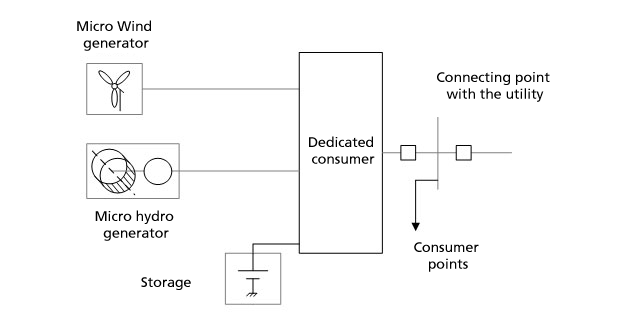MICRO GRIDS DEVELOPMENT WITH HYDRO AND WINDMICRO GENERATION: Architecture and Pilot project
This Project aims the development and implementation of a control architecture for the integration of micro generation’s resources and technologies in the electrical power distribution grid. The proposed development falls within micro grids scope placing itself in the forefront of smart grid applications in the Brazilian electric sector. In addition, the project explores two micro generation technologies of high potential, wind and hydro, that when coordinated, can be used on micro grids conception.

The architecture will be able to operate connected to the utility allowing the improvement of voltage levels, reduction of electrical losses and postponement of new infrastructure investments. Simultaneously, the possibility of operation as an isolated grid will be verified, in order to reduce the duration of consumer interruptions, using a static key.
Apart from a methodological component, the project involves the development of a pilot plant in which the proposed architecture will be implemented in the field and connected to a distribution grid of the Brazilian electric sector.
The main goals to achieve with this project are:
. 1 theoretical design and development of an automation architecture and control for micro grids powered by renewable resources, allowing isolated or utility connected operation;
. 2 Development of the topology and control of a dedicated converter able to make the management of the intermittent renewable generation, storage system, loads feed and the connection to the utility;
. 3 Installation of atest micro grid with the architecture defined in initial stages of the project so that it can be measured, tuned and validated.
For this project development a partnership was done between three institutions, INESC P & D BRAZIL, the Federal University of Santa Catarina (UFSC) and the State University of Campinas (UNICAMP). The coordinator of the project is Prof. Jose PissolatoFilho, coordinator of the High Voltage Laboratory of UNICAMP’s Electrical and Computer Engineering Faculty.



